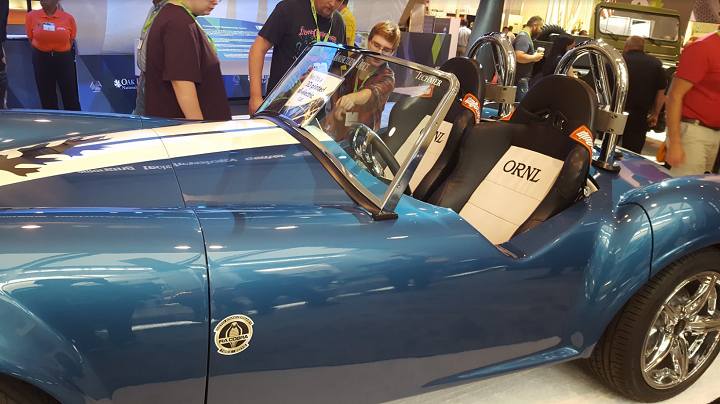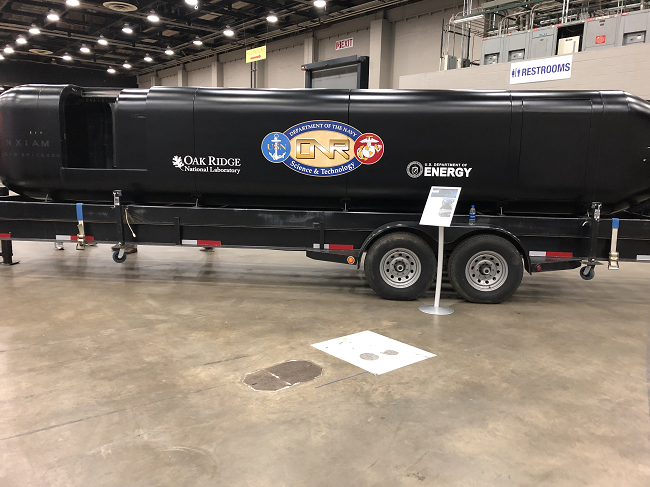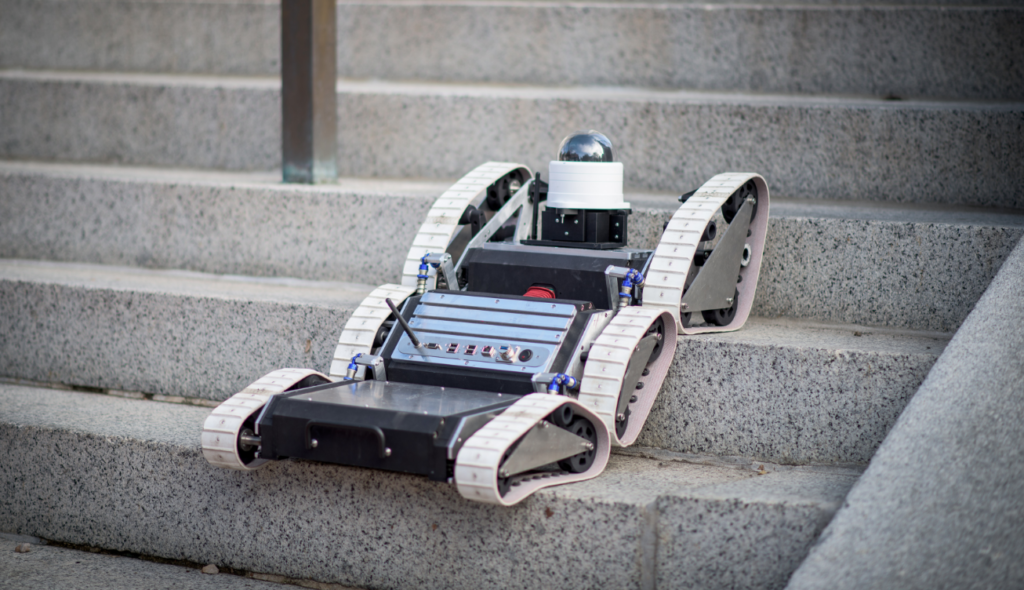As we discuss in our ongoing 3D Printing Drone Swarms series, additive manufacturing (AM) will play an increasing role in the production of all manner of semi-sentient robots. This has been demonstrated by unmanned aerial vehicles (UAVs), which are now being made in part with 3D printing for lightweight, custom designs. For this reason, we expect AM to be used for other drone-style bots as well, often for military purposes. We are also not advocating for the use of 3D printing for the manufacturing of weapons or military equipment, but are highlighting this as a likely inevitability.
Mines are generally regarded as a terrible thing. They’re an indiscriminate munition that indiscriminately kills children and enemies. Sea mines may be hit by a cruise liner or a frigate, theirs or yours. Mines themselves have, rightfully, been under near constant attack from civic groups. Countries like Mozambique, Cambodia, Egypt and Angola have lingering problems with landmines decades after the conflicts for which they were laid. Even though technically banned, landmines still kill upwards of 6,000 innocent civilians a year.
The prevalence of landmines is due to their effectiveness, both in terms of cost and violence. Landmines are inexpensive and can deny a certain area to an enemy for a long time. They can also slow down an attack, protect a flank, or just generally reduce the options an enemy has. Landmines can channel tactical behavior and freeze a battle line that was about to be overwhelmed. Meanwhile, in the ocean, sea mines have taken out frigates and other larger ships for cents on the dollar. The enemy’s ability to maneuver or attack has been limited and their commercial shipping becomes endangered as well. In the face of an outright ban, and thanks to new technology, novel types of mines are being developed.
Whereas these munitions are ethically problematic, they don’t yet get the universal bad press of landmines. We’ve previously written about loitering munitions. As stated in this article, a drone or series of unmanned aerial vehicles (UAV) can stand guard over an area. They can then kamikaze into an interloper and explode. This would be an inexpensive area deniability weapon that could be used en masse to overwhelm or retard the advance of an enemy, even a sophisticated or numerous one. I’ve argued previously that a drone swarm such as this one can change warfare as we know it. But, what similar solutions in the sea or on land can be as effective in circumventing ethics as well as defenses?
The Hull Was Always the Bottleneck

OMG super cute, ORNL is making car bodies!
Officially, this is not happening. Behind the scenes, it is one of the major reasons that the U.S. and other competing nations are investing heavily in composite 3D printing. Most speedboats are made by laying fiberglass on top of a mould. This is a slow, manual-intensive process. By using large 3D printers from such firms as Thermwood, Cincinnati, and Ingersoll entire hulls can be made in an automated manner. This could speed up a war scenario.
In the Second World War, the Germans nearly always had the best tanks. At one point, however, the Allies fielded so many substandard tanks, along with some excellent ones, that the Nazis were simply overwhelmed. In a similar fashion, 1,000 Big Area Additive Manufacturing-style 3D printers working ceaselessly could provide an unending supply of autonomous warships for the US military. No matter what the attrition, you can 3D print the problem away. All other components can be commoditized. The bottle neck was always with the hulls. In short it’s not America Makes, but America Makes Drones.

A 3D printed submarine hull made with the BAAM 3D printer by Oak Ridge National Laboratory.
Future naval supremacy could therefore be decided on the water with 3D printed boat hulls. But, more or less the same technological systems could be used for 3D printed subs. And the same style of 3D printed composite parts could be used for the bodies of land-based autonomous vehicles. More slender composite bodies can be used for missiles. In short, all of the key offensive and defensive weapons of the future will at the very least have 3D printed composite body panels or complete bodies. On the whole, we can see the potential for roughly five classes of vehicles that could operate on or under the sea, in the air, or on land. Indeed some of these vehicles could operate across all of these environments.

Classes of Vehicles
Class 1. Transport or Sensors
In this class, an autonomous vehicle carries out transport tasks completely independently. Requiring much less force protection and in a much more efficient way, it delivers supplies anywhere. Sometimes sent out to rescue soldiers, they’re typically not armed but excel in autonomously making their way somewhere and getting back. These could also be used as scout platforms or roaming sensor platforms.
Class 2. Loitering Munitions
(or what the media will probably call ‘Kamikaze Drones’)
These types of inexpensive vehicles would passively wait in an area either hidden and guarding it or patrolling it. They act as a cost-effective area deniability and protection weapon with few humans involved. Functioning autonomously or indeed just in standby mode, they would wait until a perimeter is breached or an attack comes before launching themselves at the emery.
Here, we can consider a small RC car topped with a shape charge that can drive beneath enemy vehicles. For $1,000, you could destroy an enemy fighting vehicle. Or think of inexpensive DJI-style drones with charges or grenades, as have been used in Syria. Or think of a sea mine that lays on the bottom of the water until it is called into a directed ascent. Safe at 3km depth it’ called up just when the carrier group is overhead.
Class 3. Unit Drones (or Loyal Wingmen)
This would be a man-packable or a vehicle-carried drone, a ground vehicle, or accompanying robot that is part autonomous and can be RC-controlled. Think of a donkey-like system topped with a machine gun. Soldiers can walk longer and carry less, while having more supplies. If attacked, the supply vehicle transforms into cover or a gun emplacement. Or think of a speedboat that ceaselessly circles friendly ships, ready to dive in front of enemy missiles, torpedoes, or other enemy threats. In the UAV world, the loyal wingman concept is the most advanced. Here, the vehicle is sent out as a scout or absorbs incoming missies and can be autonomous or controlled by a pilot.
Class 4. Autonomous Fighting Vehicles (aka Killer Drones)
Here, the vehicle would be a tank or a F-16, but slimmer, smaller, and less expensive. These will define the battlefield of the future and usher in the completely automated wars that people are envisioning. Humans will be remote, but perhaps in the loop, and risks will mean that more intervention on the ground, at sea, and in the air is less risky for government.
Class 5. Scavenging Drones
This class is something is definitely being developed on but not often discussed. Here, a Wall-E with a .50 cal weapon could live independently for decades. Equipped with a solar panel, it passively waits until needed. It could be sent on patrols in case of heightened tensions and return to a state of dormancy for many years. In some cases, a little sub would be activated to snoop on a ship nearby, but mostly it would lie in wait. Inexpensive but able to operate autonomously for a decade or two, these sensor platforms can provide army intelligence and an immediate ability to project power anywhere.
Congratulations, World! There are no longer any mines being used. Instead we have trucks, subs, and helicopters that hibernate until needed. The future will always be worse in ways that your nightmares could not conceive and somehow always better than any dream.
Subscribe to Our Email Newsletter
Stay up-to-date on all the latest news from the 3D printing industry and receive information and offers from third party vendors.
You May Also Like
3D Printing News Briefs, April 13, 2024: Robotics, Orthotics, & Hypersonics
In 3D Printing News Briefs today, we’re focusing first on robotics, as Carnegie Mellon University’s new Robotics Innovation Center will house several community outreach programs, and Ugogo3D is now working...
Rail Giant Alstom Saves $15M with 3D Printing Automation Software 3D Spark
3D Spark has entered into a three-year deal with the rail giant Alstom. Alstom, a transport behemoth with annual revenues of $16 billion, specializes in the manufacture of trains, trams,...
Meltio Expands Global Reach with New Partnerships in the Americas and Europe
Spanish 3D printing manufacturer Meltio has expanded its sales network across the globe. With the addition of three new partners in the United States, Brazil, Argentina, and Italy, Meltio aims...
3D Printing Webinar and Event Roundup: April 7, 2024
Webinars and events in the 3D printing industry are picking back up this week! Sea-Air-Space is coming to Maryland, and SAE International is sponsoring a 3D Systems webinar about 3D...































